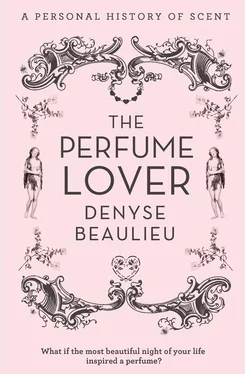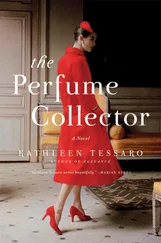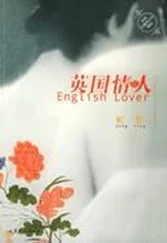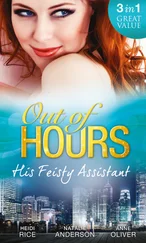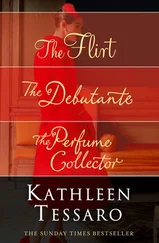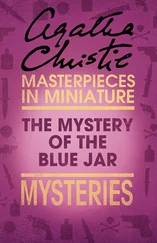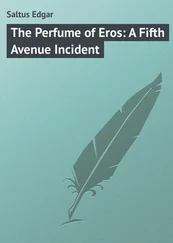With her gracious manners and lively laugh, Elisabeth herself is the very type of Parisienne foreign visitors have admired since Marie-Antoinette’s day. Even the dishevelled garden where we converse has just a touch of the négligence étudiée that distinguishes chic Parisian women from their fiercely put-together New Yorker or Milanese counterparts. I can easily envision Madame de Feydeau in one of the supple white muslin gowns the queen made fashionable in the 1770s, presiding over an assembly of philosophers and artists with whom she could match wits. Because this is what Paris gave to the world, through the learned, elegant women who led its social life and were deemed worthy intellectual sparring partners by the brightest men of the age: wit rather than pedantry; a way of thinking of life’s pleasures with the finely honed weapons of philosophy. You’ve always wondered why the French appreciate smart women? Why women don’t drop off the radar after the age of forty? There you have it. Where the art de vivre is a serious pursuit, the women who have turned it into an art form are valued indeed. And this, we owe to the 18th century.
Thus, it isn’t surprising that Elisabeth turned her attention to that very period with A Scented Palace: The Secret History of Marie-Antoinette’s Perfumer. Jean-Louis Fargeon rose to the top of his profession just as perfumery was severing its ties with tannery and glove-making to become a fully fledged trade – another turning point in the history of the industry. If he left his native Montpellier, it was because he knew that he could only succeed if he breathed in the incomparable esprit de Paris. And if he nabbed the world’s most prestigious customer, it was because he was incomparably skilled at composing the delicate floral blends that reflected the era’s craving for a simpler, more natural life … Fargeon’s status as the queen’s perfumer almost cost him his head during the French Revolution: he escaped the guillotine by a hair’s breadth simply because, as he was rotting in jail, Robespierre was executed, thus ending the Terror that cost the lives of over forty thousand people, a full third of whom were craftsmen. And the Revolution did, in fact, almost kill off the French perfume industry, not only because it dissolved the guild of perfumers, which reeked of aristocratic privilege, but because most of its clients were either beheaded or exiled. By the time a new court was formed around the Emperor Napoleon, tastes had changed. Though the Empress Josephine was inordinately fond of musk, he preferred her natural aroma, famously asking her not to wash for several days because he was returning from a military campaign. And he loathed perfume apart from eau de Cologne, which he carried everywhere with him, literally showered with and even consumed by dunking lumps of sugar in it. After his fall, the French luxury trades declined while the English industry gained ascendancy.
‘Then, in 1830, French perfumers came up with the phrase “Invent or perish”,’ reveals Elisabeth. ‘They realized that the world had changed, that the perfumery of the old regime was no longer possible, and from 1840 onwards, French perfumery started rebuilding itself.’
But the period was dominated by bourgeois, puritanical values, and vehemently rejected the wastefulness and deceit of cosmetics and fragrances. ‘Perfumes are no longer fashionable,’ sniffed a French Emily Post in 1838. ‘They were unhealthy and unsuitable for women for they attracted attention.’ At most, a virtuous woman could smell of flowers, and not just any flowers: heliotrope, lilac, carnations or the whitest possible roses. Master perfumers like the Guerlains – the house was founded in 1828 – undoubtedly made lovely blends for their wealthy customers, but the bulk of scents were mainly used as personal hygiene products in an era when most homes didn’t have running water. Fragrance was no longer a luxury: it was just a way of smelling nice, of removing bad smells.
Paris, however, remained the capital of fashion: it was here that the Englishman Charles Frederick Worth established himself as the world’s first star couturier, under the reign of Napoleon III. But French perfumery would have lagged behind without the handful of visionaries who propelled it into the 20th century.
One of these men was Jacques Guerlain, who authored a series of shimmering, impressionistic masterpieces still produced and adored to this day: Après l’Ondée, L’Heure Bleue, Mitsouko and Shalimar. But an upstart was hot on his heels, a self-taught perfumer untrammelled by tradition and therefore willing to use the new, more brutal synthetic materials to conjure vibrant Fauvist compositions in tune with the scandalous Ballets Russes. It was the Corsican François Coty, known as the Napoleon of perfumery, who democratized fine fragrances by launching cheaper ancillary lines, whereas Guerlain perfumes were still sold to a very select clientele. Soon, he was selling 16 million boxes of talcum scented with L’Origan in France alone. Guerlain had reinvented the heritage of traditional perfumery: Coty turned it into a worldwide industry and took it into the 20th century.
But it was haute couture that truly transmogrified Paris perfumes into the stuff dreams were made of for millions of women around the planet – the stuff that would make a young girl in the suburbs of Montreal decide she would be Parisian one day because of a spritz of Rive Gauche. ‘As long as you’re in a one-to-one relationship with your customer, like Jean-Louis Fargeon was with Marie-Antoinette, or Jacques Guerlain with the clients who came to his salon, you can explain your perfume, make it loved,’ Elisabeth tells me. ‘But when fragrance becomes an industry, how do you sell it as a luxury item? Perfume needs to be supported by image. And who but world-famous Paris couturiers could provide a better one?’
The first couturier to launch a perfume house was Paul Poiret, in 1911. The Pasha of Paris, as he was dubbed, was practically the first to turn fragrance into a concept, with a dedicated bottle and box for each product. But he made the marketing mistake of not giving it his own name. The first to do that, in 1919, was Maurice Babani, who specialized in Oriental-style fashions and whose perfumes bore such exotic names as Ambre de Delhi, Afghani or Saigon. Gabrielle Chanel followed suit in 1921, but her N°5 only went into wider production in 1925, when she partnered up with the Wertheimers who owned Bourjois cosmetics. By that time, other couturiers like Jeanne Lanvin and Jean Patou had realized perfume was a juicy source of profit and got in on the game. Thus it was that in the first decades of the 20th century, French couture and perfumery began an association from which the prestige of the most portable of luxury goods – a few drops on a wrist or behind the ear – would durably benefit.
But it wasn’t all a canny exploitation of the Parisian myth. French perfumery truly was the best and the most innovative; French perfumers did create most of the templates from which modern perfumery arose. Why? Perhaps because, ever since Colbert’s day, Paris had been a laboratory of taste, not only in fashion or perfume, but also in cuisine and decoration. A discerning clientele of early adopters, eager to discover new styles and new fashions, spurred the purveyors of luxury goods into devising ever more refined, more surprising, more delightful products, thus bringing their craft to an incomparable degree of perfection. Function, as it were, created the organ. In this case: the best noses in the world.
However, my very first perfume was not French, but American. Its frosted apple-shaped bottle has managed to survive the decades without getting carried off in my mother’s garage sales. It followed my parents when they sold the house where I grew up. It still taunts me whenever I go home to visit …
Читать дальше
